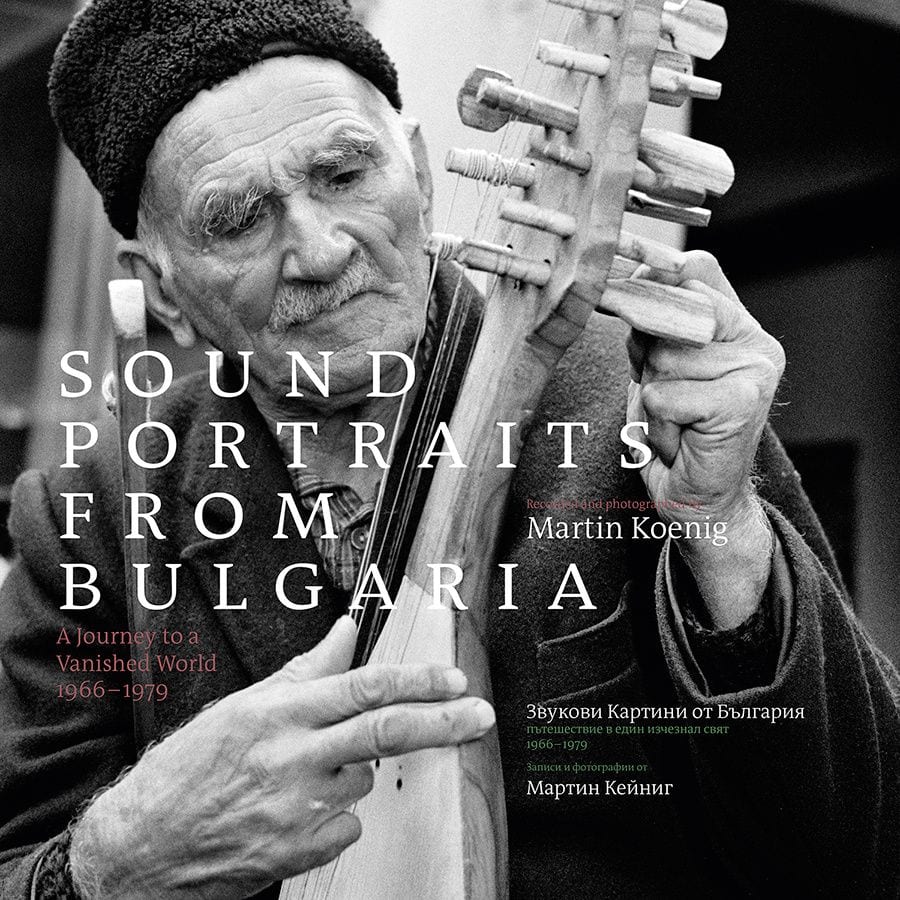
Decades have passed since the Le Mystère Des Voix Bulgares project brought choral arrangements of Bulgarian folk music to a global listening public during the height of the worldbeat craze. Bulgarian choral sounds would become emblematic of world music as a genre, with techno remix albums winning Grammys and making their way into the true mainstream by way of the Xena: Warrior Princess theme song.
The state-sponsored Bulgarian ensembles covered by the Le Mystère project, though, are still a full step removed from the rural Bulgaria they are often taken to represent. Smithsonian Folkways’ Sound Portraits from Bulgaria: A Journey to a Vanished World fills in this missing piece with sound, image, and word. It includes field recordings and photographs of Balkan expert Martin Koenig made between 1966 and 1979, along with thorough notes on the respective performers and contexts involved in each track put together by Koenig and ethnomusicologists Ventsislav Dimov, Lozanka Peicheva, and Timothy Rice. All in all, the work is comprised of two CDs and a large, bilingual book, with textual information replicated in both English and Bulgarian.
From start to finish, it’s a beautifully curated project, representing a range of Bulgarian sounds sorted by region. We hear instrumental Thracian dance music, resonant with sounds of distinctly Bulgarian instruments – the kaval, an end-blown flute; the gaida, a goatskin bagpipe; the gadulka, a bowed fiddle – and women’s a cappella singing, typically done in unison.
From Thrace, we move into Central-West Bulgaria, where the polyphony so strongly associated with the national choirs makes for totally different sounds and vocal pieces reign. Listeners familiar with the whole Le Mystère catalog will recognize vocal tracks “Vetar vee, gora se lalee” and “Pushka pukna/Ozdolu idu vratska koltsa” as ones later arranged for the choirs. The latter was remixed into an electronic frenzy on the group’s award-winning “pop” album.
The second disc takes us to Northwest Bulgaria, where we find ourselves in villages on the Serbian border. Dobrudzha is just south of Romania. Strandzha is on the Black Sea and strongly influenced by Turkey. Meanwhile, from Rhodopes, we hear a single, soaring track from on high in the mountains. We have exposition by way of the book, which gives us the technical, historical, and visual. Black and white photos emphasize the fact that we are traveling not just in space as we listen, but in time.
Bulgaria is hardly an area untouched either in academic studies or by popular music publishers. Yet, this project comes across as a groundbreaking kind of time capsule, the sounds so fresh they might as well have been vacuum-sealed, the pictures so clean and crisp that it seems impossible that they could be several decades old. The care and respect given to each performer and each piece is something not to be taken for granted, especially given how the musical practices at hand have been divorced from their source material to be chopped and cherry-picked in nationalist projects and popular projects.
But these are sounds and images from before Bulgarian choirs swept the world, brought directly to our present times and places without being tailored for us. There is as much value in this, the raw folk music, as there is in the work and refinement of the choirs. In his introduction, Koenig cites a relevant, if trite, piece of wisdom as justification for this project: “[Y]ou must know where you come from in order to know where you are going.”
In Sound Portraits of Bulgaria, we learn history in new ways, with a multimodal aesthetic depth that teaches us both through written facts and other, more artful means of expression. A truly essential addition to any global folk collection.

